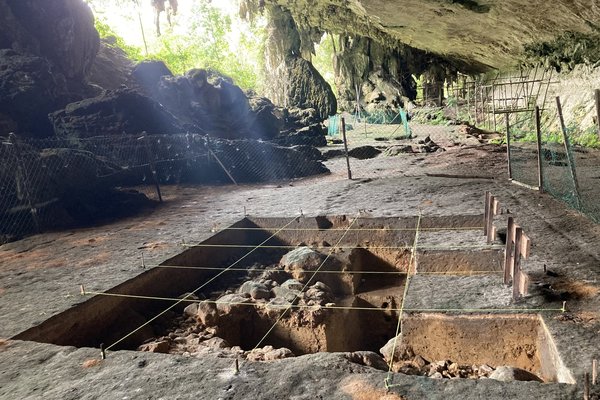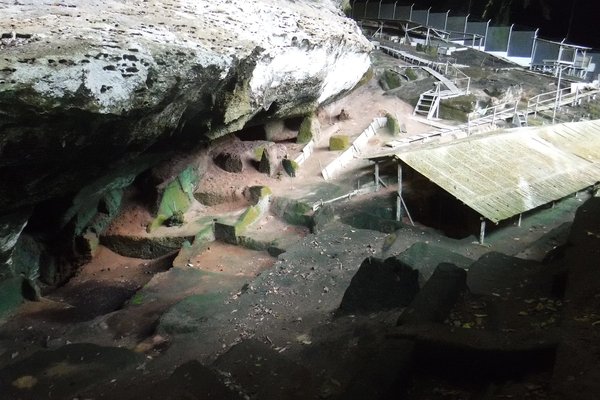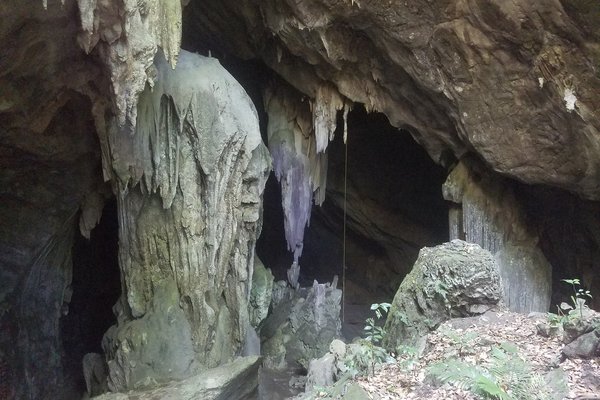Malaysia
Niah Caves
The Archaeological Heritage of Niah National Park’s Caves Complex highlights the adaptation of very early humans to living in the tropical rainforest.
The limestone caves hold the remains of prehistoric human burials, stone tools and cave wall paintings. Evidence for the transition from foraging to farming has also been found. The caves have been used by humans since at least 50,000 years. Its ca. 40,000-year-old “Deep Skull” is regarded as the oldest anatomically modern human recovered from the Island Southeast Asia.
Community Perspective: Solivagant wrote about the site's history, while Els (by public transport) and Randi (by rental car) focused on the visitor experience in 2023.
Site Info
Official Information
- Full Name
- The Archaeological Heritage of Niah National Park’s Caves Complex (ID: 1014)
- Country
- Malaysia
- Status
-
Inscribed 2024
Site history
History of Niah Caves
- 2024: Inscribed
- Inscribed
- Type
- Cultural
- Criteria
- iii
- v
Links
- UNESCO
- whc.unesco.org
- Official
-
- sarawakforestry.com — Sarawak Forestry Corporation
- niahnationalpark.my — Niah National Park
All Links
UNESCO.org
- whc.unesco.org — whc.unesco.org/
Official Website
- sarawakforestry.com — Sarawak Forestry Corporation
- niahnationalpark.my — Niah National Park
Community Information
- Community Category
- Paleontology: Human evolution
Travel Information
Recent Connections
-
Historic climate change
"Criterion (v): The Niah Caves Complex …
-
Perfect Inscriptions
2024 -
Edible bird's nest collection
"The recent history of the complex is c…
Connections of Niah Caves
- History
-
-
Iron Age
"Items found at the Niah Cave include Pleistocene chopping tools and flakes, Neolithic axes, adzes, pottery, shell jewellery, boats, mats, then iron tools, ceramics and glass beads dating to the Iron Age." (wiki) -
Historic climate change
"Criterion (v): The Niah Caves Complex is an outstanding example of very early human settlement and land use in the Southeast Asian region, and of human interaction with a changing environment during prehistoric times." (OUV). "The faunal and floral deposits that have been found in the caves indicate that the climatic conditions here have changed from favouring an open, dry forest to promoting a dense rainforest. During the Pleistocene, northern Sarawak experienced a dry climate with low rainfall and long dry seasons. By the end of the Pleistocene (11,700 BP), sea levels had begun to rise, along with temperatures and rainfall. This caused the vegetation, and consequently the fauna, to gradually change into the tropical rainforest ecosystems that exist today." (AB Ev)
-
Neolithic age
"Neolithic-period burials" (AB ev) -
Early Hominid Remains
"Human skeletal remains, including the circa 40,000-year-old “Deep Skull” ..."The “Deep Skull” is regarded as the oldest anatomically modern human recovered from the Island Southeast Asia." (AB ev) -
"Cave Man" sites
"a system of colossal, interconnected caverns and caves that provided shelter for early humans since the Pleistocene" (AB Ev) -
Palaeolithic and Mesolithic
"The archaeological evidence indicates that there were two distinct societies using the West Mouth of the Niah Great Cave during different periods of time. The first society, termed the "Mesolithic", occupied the site from circa 11,500 to 8,000 BP." (AB Ev)
-
- World Heritage Process
-
-
Perfect Inscriptions
2024
-
- Human Activity
-
-
Edible bird's nest collection
"The recent history of the complex is closely related to harvesting and trading guano and edible bird’s nests found within the caves, two extremely lucrative commodities. This practice has been sustained to the present day as a main local economic contributor" (AB ev) -
Guano 'Mining'
"Local communities continue to observe a centuries-long tradition of molong, “take only what you need”, when harvesting guano and highly valuable edible bird’s nests from the caves complex." (AB ev) -
Ongoing Archaeological digs
"Overall, there are twenty-seven sites currently under research, including the (...) sites at the Niah Great Cave and the Painted Cave." (AB Ev - 2024) -
Pictographs
rock paintings in the Painted Cave
-
- WHS on Other Lists
-
-
Located in a TCC Territory
Sarawak -
Cultural WHS set within an IUCN recognised protected area
Niah National Park
-
- Timeline
-
-
Late Pleistocene
"The caves have been used by humans from at least 50,000 years ago." (AB ev)
-
- Science and Technology
-
-
Recorded cultural discoveries
"The cave was first described to Westerners in 1864 by Alfred Russel Wallace" (brittanica.com) -
Archaeological potential
"The nominated property comprises thirty archaeological sites in the Park, including (...) the unexcavated sites with archaeological potential." - "(...) three more sites with archaeological potential have been identified but are yet to be explored. Located at the main massif, these sites are the Lobang Berkajang (Upper Part), the Lubang Manyik, and the Lubang Iman. (AB Ev)
-
- Visiting conditions
-
-
Foreigner prices
RM 20 for foreigners and RM 10 for locals
-
- WHS Names
-
-
Named after a River
The park is named after the Niah River which has to be crossed to enter it.
-
News
No news.
Recent Visitors
Visitors of Niah Caves
- Alex Goh
- Ammon Watkins
- Atila Ege
- Bin
- Bram de Bruin
- Celina Nanbara
- Dylan
- Els Slots
- Erik Jelinek
- Errol Neo
- Frédéric M
- Frederik Dawson
- Joel on the Road
- Kurt Lauer
- Lukasz Palczewski
- Naim Y
- Randi Thomsen
- Sergio Arjona
- Shandos Cleaver
- Solivagant
- Stanislaw Warwas
- Svein Elias
- Thomas Buechler
- Thomas van der Walt
- triath
- Vanessa Buechler
- Wojciech Fedoruk
- Zoë Sheng
Community Reviews
Show full reviews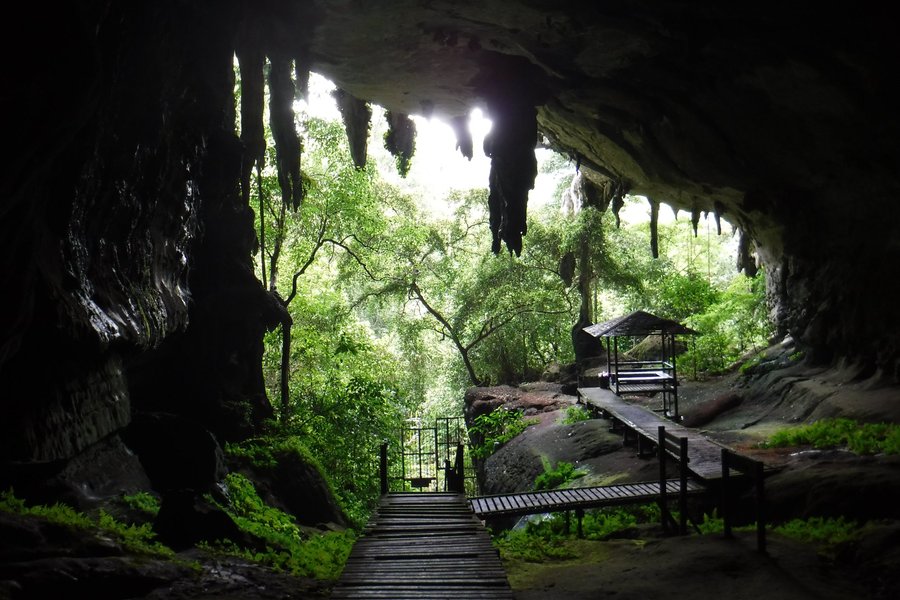
In her review, Randi explains that she visited Niah during the same year as Els, so their visits are very similar. In my case, I visited Niah the day after Els' visit! We even had dinner together in Miri and I was able to benefit from her advice following her visit. My account will therefore also be very similar to hers, but my appreciation of the site differs greatly.
Like Els, I travelled to the park by bus. However, unlike her visit, cabs were waiting for tourists at the junction in my case, and a driver found me before I even started looking for him. The return journey was equally straightforward, with a bus waiting at the junction when the driver called by the receptionist dropped me off. After registering, I crossed the river by boat and began my visit to the museum. The museum is informative, but not particularly well presented. There's little structure between the many panels, some are redundant and most seem to have been created by students with no sense of synthesis. Artifacts are unfortunately few and far between. The temporary museum in Lenggong Valley was even better than this one.
The hike to the caves, however, is very pleasant (I can't remember if the sidewalk was slippery). The forest is dense and lush. I saw insects, millipedes and lizards all along the way. The first cave (which is more of a rock shelter), Traders Cave, contains scaffolding used by bird nest collectors. Even more breathtaking, …
Keep reading 0 comments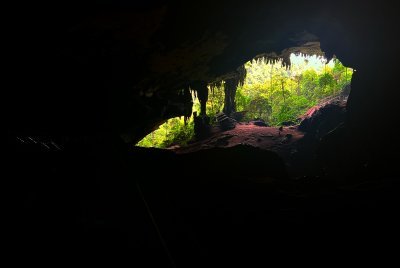
With Niah’s UNESCO inscription means Malaysia have two paleontology sites making this country to be on the same league with South Africa and Ethiopia on center of humankind evolution study, something remarkable and mind-blowing facts you have never expected from this Southeast Asian country. Also with this inscription, Miri, the capital of Malaysian petroleum production, becomes the gateway of two World Heritage Sites, and surely will become the tourism center of Sarawak. After underwhelming experience at Lenggong Valley, I hoped that Niah will not be the same.
From Miri I drove my rental car to Niah in early morning, and surprisingly when I reached the park, few cars already there and there was a queue of at least 10 locals waiting for registration. However, with some reason after I got a ticket, I was the only one that went to the jetty and within few minutes the boat took me to the other side, so I was the first visitor of the day. Without hesitation I walked along the slippery pathway with my trusted hiking boots passing lovely jungle and swampy forest with many bugs and animal sighting, those were runaway when they heard my footstep. Within 50 minutes I reached the first cave, the Traders Cave where I could see two archaeological digs easily, bamboo structure for bird nest collecting, and thick layer of guano under beautiful caverns that so perfect for photography, a whole package of this World Heritage Site. Then I went to the Great Cave …
Keep reading 0 comments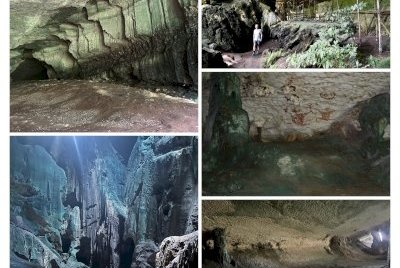
Having visited the Niah Caves complex same year as Els we have almost “the same story” although with a few differences. The similarities were the Borneo Cultures Museum in Kuching, the Mulu site, the short river crossing with the 3 km hike om the slippery walkway before reaching the Traders Cave and the Great cave, but then some differences.
We rented a car at Miri airport round noon and arrive the visitor center at 1:15. We registered, paid, and went down to the river where the boat was supposed to be, but it wasn’t there. A guy told us to wait 10 minutes, but 10 minutes turned into 45 minutes. The boat was probably on an unauthorized trip to the nearest small town. On the other side at 2:15 the boatman told us that last departure is at 5 o’clock! Just too late we discovered that this would give us about 45 minutes at the site plus one hour back and one hour forth, which was very annoying! This would be a kind of a race!
All alone we were speedwalking on the slippery walkway even if it simply is not possible. After 40 minutes we passed the stall which was without any drinks, snacks, or people at all, we climbed the stairs to the first cave. Continuously rushing we entered the Great Cave on the path towards The Painted cave. We were all alone in the dark as there was no lightning. We were supposed to bring …
Keep reading 0 comments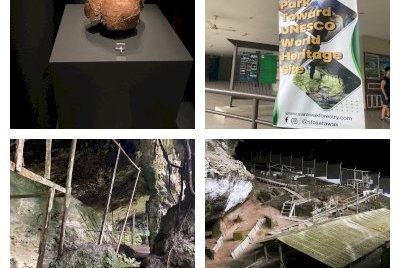
A visit to ‘The Archaeological Heritage of Niah National Park’s Caves’ nowadays has to start in Kuching, where in the wonderful Borneo Cultures Museum they have ‘Deep Skull’ on display. The museum’s fourth floor holds an intriguing exposition about the findings in Niah.
When I arrived at Niah National Park itself, I was surprised to see banners all around stating ‘Niah National Park Toward UNESCO World Heritage Site’. As the nomination is only up in 2024, this is a bit premature and just shy of failing Commandment #7! The facilities, including a large car park, cafeteria, and tourist bungalows, already are set up for high numbers of visitors. On a weekday in March 2023 though, there were only a handful of other people.
There still is no bridge however to enter the park, so two young guys were ferrying the visitors across (1 ringgit, 1 minute). On the other side, the 3km long trail to the caves starts. I had read reports beforehand about how slippery the walkway is, even dangerous. To make things worse, it had rained heavily all night and was just starting to clear up when I arrived at Niah. So I took it slowly and used the handrails wherever I could. It was indeed slippery in places, but I think the park already has taken some measures to improve such as placing additional red-and-white coloured iron bars on the steepest parts.
After about 50 minutes I arrived at the stairs to the caves …
Keep reading 0 comments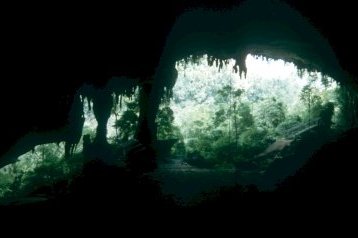
With the possible upcoming nomination of Niah Caves by Malaysia in 2024 (having only been added to Malaysia’s T List in Jan 2021) it seems worthwhile posting its first review – even if it relates to a visit way back in April 1997!!. To set the scene it might be worth explaining why we visited the site at all during our journey from Kuching across Borneo to Mt Kinabalu, since the visit was self evidently NOT because it was on the UNESCO T List!! As a National Park with caves and “natural sights” it was, and still is, very much “second class” behind Gunung Mulu but we were pushed for time and, to some extent, money. So that wasn’t on for us and Niah was easily accessible just off the road between Kuching and Miri. It also had a particular archaeological “claim to fame” for discoveries of late Pleistocene human remains made there in the 1950s. In this respect its star has possibly somewhat waned since those days with reinterpretation of the findings and the making of many more archaeological finds across SE Asia. Its other significant aspects for us were its use by locals for harvesting the nests used to make “Birds Nest soup”, for bat guano collection and for the evening flights of Swiftlets back to the cave and Bats going out.
The 1958 discovery in the Great Cave at Niah of what came to be titled “Deep Skull”, a c40k year old Homo Sapiens cranium …
Keep reading 0 comments
